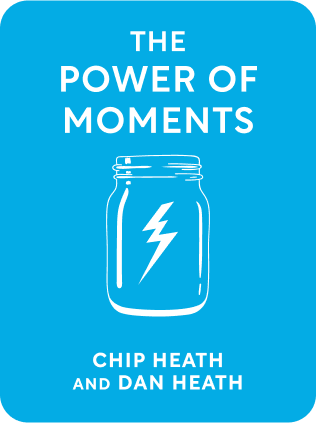

This article is an excerpt from the Shortform book guide to "The Power of Moments" by Chip Heath and Dan Heath. Shortform has the world's best summaries and analyses of books you should be reading.
Like this article? Sign up for a free trial here .
Do you feel like your team is disconnected from the goals of your organization? How can you bridge that disconnect and get your team excited about your vision?
Many companies suffer a disconnect between the grand vision of the organization and the motivations of its individual team members. As a result, employees lack the motivation to consistently meet and exceed expectations. To bridge this disconnect, create and celebrate meaningful milestones that matter to your team members on a personal level.
Here is how to motivate your team to do their best.
Create Meaningful Milestones for Your Organization
Often, organizations tend to get lost in their big-picture goals—achievements that matter to the organization, but perhaps not to the people who need to take the steps to make those achievements happen.
- For instance, “Let’s increase our school’s 4th grade state test scores by 2% this year.” Or, “We want to increase revenue by $3 million this quarter.”
While these may be worthy and important goals, they don’t really matter on a more personal level, which can easily make team members feel lost or demotivated. They’re just one person among many. What could they possibly do, personally, that would help make that goal happen?
The Heaths say that you should view a disconnect between the motivations of your team and the motivations of your organization as an opportunity to build in small wins that are motivating on your team’s level. To achieve this, you need to ask yourself three questions:
- What inherently motivates my team? In a setting with clients, this might look like: Receive a 5-star review from a satisfied customer.
- What deserves celebration and doesn’t take too long to accomplish (a few days, weeks, months)? In an ad sales setting, you could set a goal such as: Secure one luxury goods brand and one luxury travel brand for the December issue.
- What are uncelebrated milestones we can bring attention to and celebrate? In a customer service setting, this may look like: Go one week without any customers scoring below 5 on the satisfaction survey.
(Shortform note: Psychologists back up the power of breaking down large, ambiguous issues—studies show that reframing major social issues as a series of small, solvable problems strengthens individuals’ motivations to take action. When an issue feels like an overwhelming beast, no one feels up to the task of tackling it. When it feels like a series of small puzzles, however, people feel more confident in their problem-solving abilities.)
Making a Vague Goal Personal and Meaningful
Here is an example of how to motivate your team by breaking down big, ambitious goals into goals that matter on a personal level.
Imagine a school presents a goal for the academic year: Increase our school’s 4th grade state test scores by 2% this year. Ms. Smith, a 4th grade teacher, breaks this big goal down into smaller goals her students can accomplish:
Level 1: Earn a spot in “Ms. Smith’s Homework Stars of the Week.”
Level 2: Read for an extra 30 minutes every night and write down two new vocabulary words each week, earn a lollipop at Friday lunch.
Level 3: Earn 100% on your morning multiplication drill and be the line leader for recess.
Level 4: Write a story using five new reading vocabulary words to earn three extra points on your next vocabulary test.
Level 5: Earn above 90% on two math quizzes to earn a No Homework Pass for one night.
Destination: Students who are working harder in math and reading, subsequently making the necessary improvements to perform well in state testing.
This approach works for her students—they can understand the smaller goals and easily achieve them with a bit of effort. Furthermore, the goals are fun enough to matter to 10-year-olds, and her students have many occasions to feel pride on their journey to math and reading improvement. In contrast, imagine how this might have played out differently if she’d simply said, “Okay, we need to improve in math and reading this year. Get to it!”

———End of Preview———
Like what you just read? Read the rest of the world's best book summary and analysis of Chip Heath and Dan Heath's "The Power of Moments" at Shortform .
Here's what you'll find in our full The Power of Moments summary :
- How to make everyday experiences meaningful and memorable
- A look at the four elements that create meaning
- How your senses can play a role in elevating everyday moments






